Revolutionary High Speed 2 (HS2) UK Project: Redefining the Future of Rail Infrastructure
The High Speed 2 (HS2) UK project represents one of the most ambitious and technically advanced railway infrastructure developments ever undertaken in Europe. Designed to revolutionise how Britain moves, it aims to reduce travel times, boost regional economies, and create a cleaner, high-capacity transport future. Despite funding challenges and political adjustments, HS2 remains a transformative milestone in British engineering and national connectivity.
The Vision Behind the High Speed 2 (HS2) UK Project
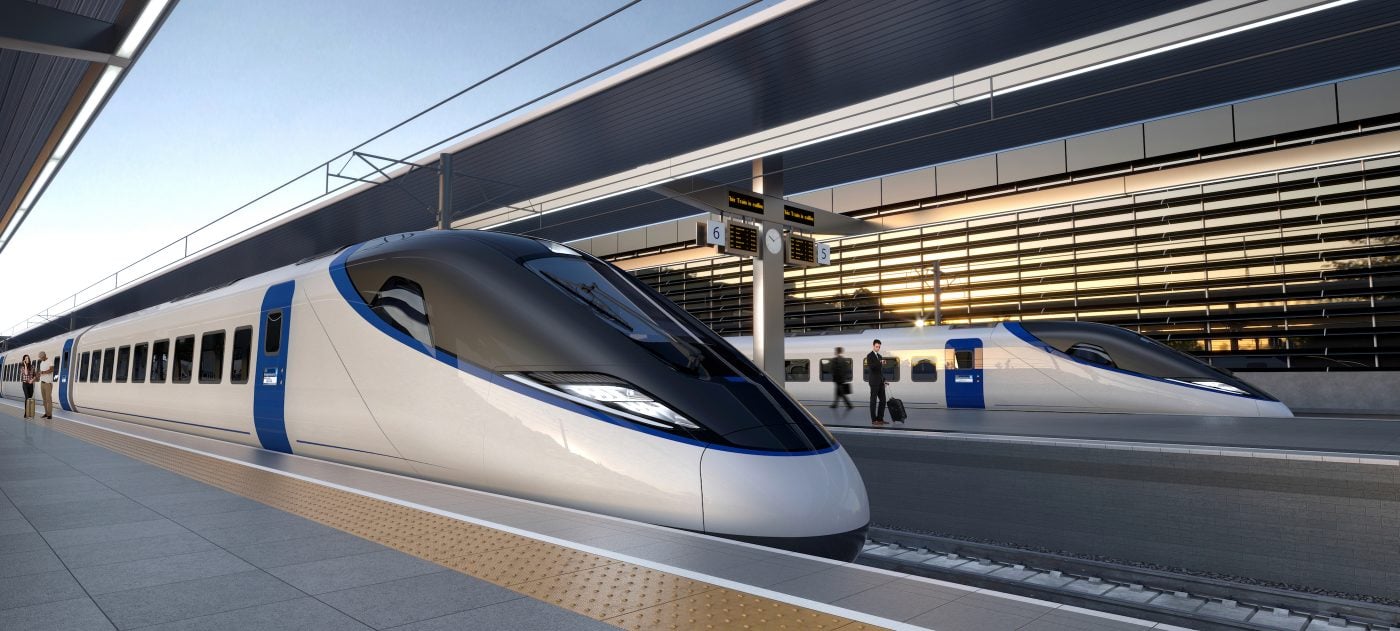
The High Speed 2 (HS2) UK project is the centrepiece of modern railway modernisation in Britain. Launched in 2009, it was conceived to enhance national productivity, expand transport capacity, and stimulate economic growth beyond London.
At its core, the HS2 rail project aims to build a high-speed rail network capable of speeds up to 360 km/h (225 mph), connecting London with major northern and midland cities. The Department for Transport (DfT) oversees the project through HS2 Ltd, ensuring that it aligns with the UK’s long-term decarbonisation and mobility goals.
The project is not just about speed; it’s about redefining how infrastructure supports economic equality and sustainable development. The line will eventually integrate with regional rail corridors, linking key cities through an environmentally conscious, high-capacity transport backbone.
Phased Development of the HS2 Rail Project
Like many major construction projects in the UK, the HS2 rail project is being delivered in carefully structured phases. Each phase reflects a combination of technical complexity, financial planning, and political recalibration.

Phase One: London to Birmingham
Phase One is the foundation of the HS2 infrastructure development, stretching from London Euston to Birmingham Curzon Street, a distance of approximately 225 km.
Key Highlights:
- Speed: Operational at 360 km/h.
- Major structures: 32 km of tunnels and 130 bridges.
- Cost estimate: £44.6 billion/USD 58 billion (as of 2024).
- Completion target: Between 2029 and 2033.
This section includes major new interchanges such as Old Oak Common Station (London’s future transport super-hub) and Curzon Street Station, a state-of-the-art terminal designed with carbon-neutral principles.

Birmingham Curzon Street Station (An artist’s impression)
Phase 2A: Birmingham to Crewe (Cancelled in 2023)
Initially envisioned as the next leg, Phase 2A would have extended HS2 to Crewe, strengthening links to Manchester and the North West. However, it was cancelled in October 2023 amid cost control measures, redirecting £36 billion towards local connectivity improvements under the Network North initiative.
Phase 2B (Western Leg): Crewe to Manchester (Suspended for Review)
The future of Phase 2B, western leg, remains under consideration. If reinstated, it would connect Birmingham and Manchester through a 64 km corridor. As of 2025, the project awaits evaluation under the HS2 Review Commission, which is exploring a scaled alternative.
Phase 2B (Eastern Leg): Birmingham to Leeds (Cancelled in 2021)
The eastern leg extension to Leeds was scrapped in 2021, although the government has promised equivalent investment in the Midlands Rail Hub and Northern Powerhouse Rail, two critical projects that will complement HS2’s benefits for better railway connectivity for the major towns and cities in the UK.
Engineering Design and Technical Specifications
The HS2 rail project showcases world-class engineering and design innovation. Its technical sophistication not only meets European interoperability standards but also sets new benchmarks for high-speed rail resilience, sustainability, and passenger comfort.
Track, Power, and System Design
| Parameter | Specification |
| Total Track Length (Phase 1) | 225 km |
| Maximum Design Speed | 400 km/h |
| Operational Speed | 360 km/h |
| Track Type | Slab track with continuously welded rail |
| Electrification | 25 kV AC overhead catenary |
| Power Supply | National Grid connection, regenerative braking |
| Rolling Stock | 54 Alstom–Hitachi-built trainsets, 400 m long with capacity >1,000 passengers per trainset for peak throughput. |
The slab track system used in the HS2 rail project offers reduced maintenance and higher stability at extreme speeds. Each trainset will seat over 1,000 passengers, featuring low-noise interiors, 5G connectivity, and energy-efficient traction.

Slab track system used in the High Speed 2 (HS2) UK project
Structural and Safety Innovations
HS2’s infrastructure was designed to endure environmental and operational extremes:
- Seismic resilience: Tolerates ground accelerations of 0.25–0.3 g.
- Wind resistance: Aerodynamic profile tested to withstand gusts up to 200 km/h.
- Fire resistance: Structural elements rated to 1,200°C for up to 3 hours.
- Monitoring systems: 200+ embedded sensors in bridges and tunnels for real-time condition tracking.
Such precision-engineered standards ensure that the HS2 rail project remains one of the most technologically advanced railway modernisation projects in Britain.
Key Engineering Works and Construction Highlights
Every phase of the High Speed 2 (HS2) UK project brings together thousands of engineers, geologists, and technicians working to shape one of Europe’s most significant civil engineering achievements.
1. The Colne Valley Viaduct
Stretching 3.4 km across the Colne Valley Regional Park, the Colne Valley Viaduct is the longest rail viaduct in the United Kingdom. Built using low-carbon concrete, it reduces embodied emissions by 30%. The viaduct’s 1,000-tonne segments were launched with precision using a 160 m gantry, advancing construction efficiency.
Key Points:
- Length: 3.4 km – the UK’s longest railway viaduct.
- Materials: 100,000 tonnes of low-carbon concrete.
- Design: Segmental box-girder structure supported by 56 piers over water.
- Construction Method: Balanced cantilever using bespoke launching gantries.
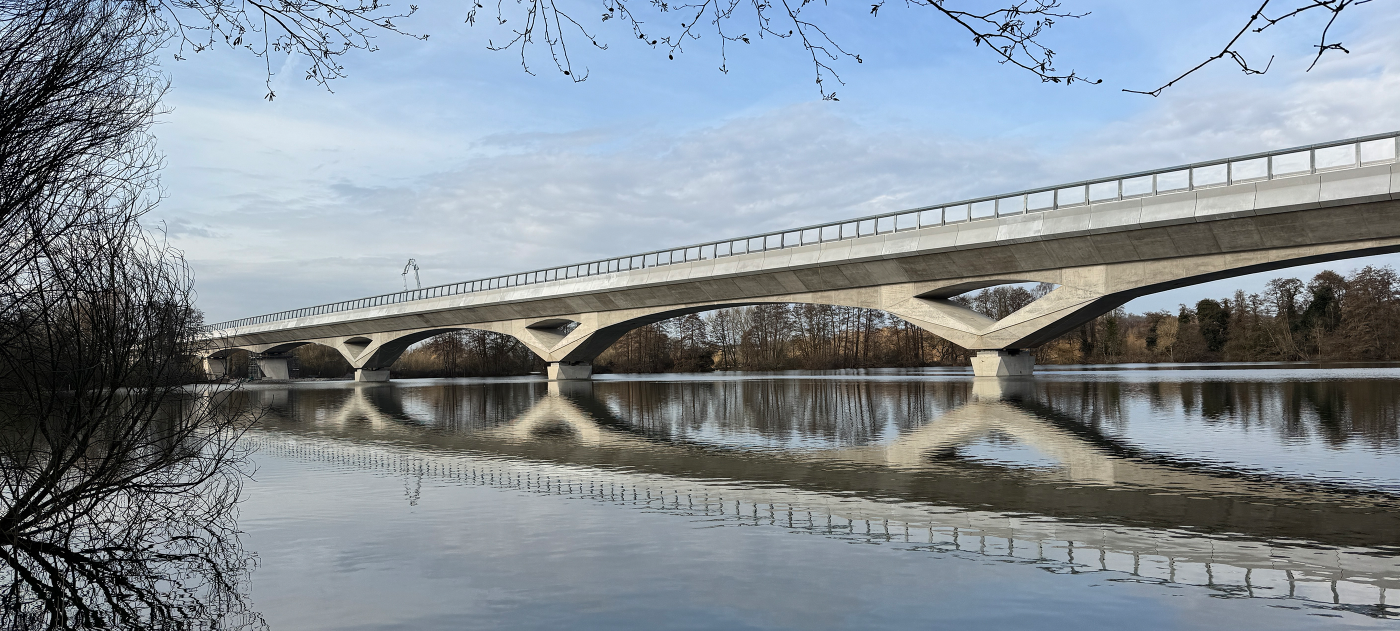
The Colne Valley Viaduct
2. The Chiltern Tunnels
Bored by two 2,000-tonne tunnel boring machines (TBMs) named Florence and Cecilia, the Chiltern Tunnels stretch 16 km beneath protected woodland, hence forming the longest tunnel on the HS2 rail project. Advanced slurry systems and chalk recycling technology reduced waste while stabilising pressure in fragile strata.
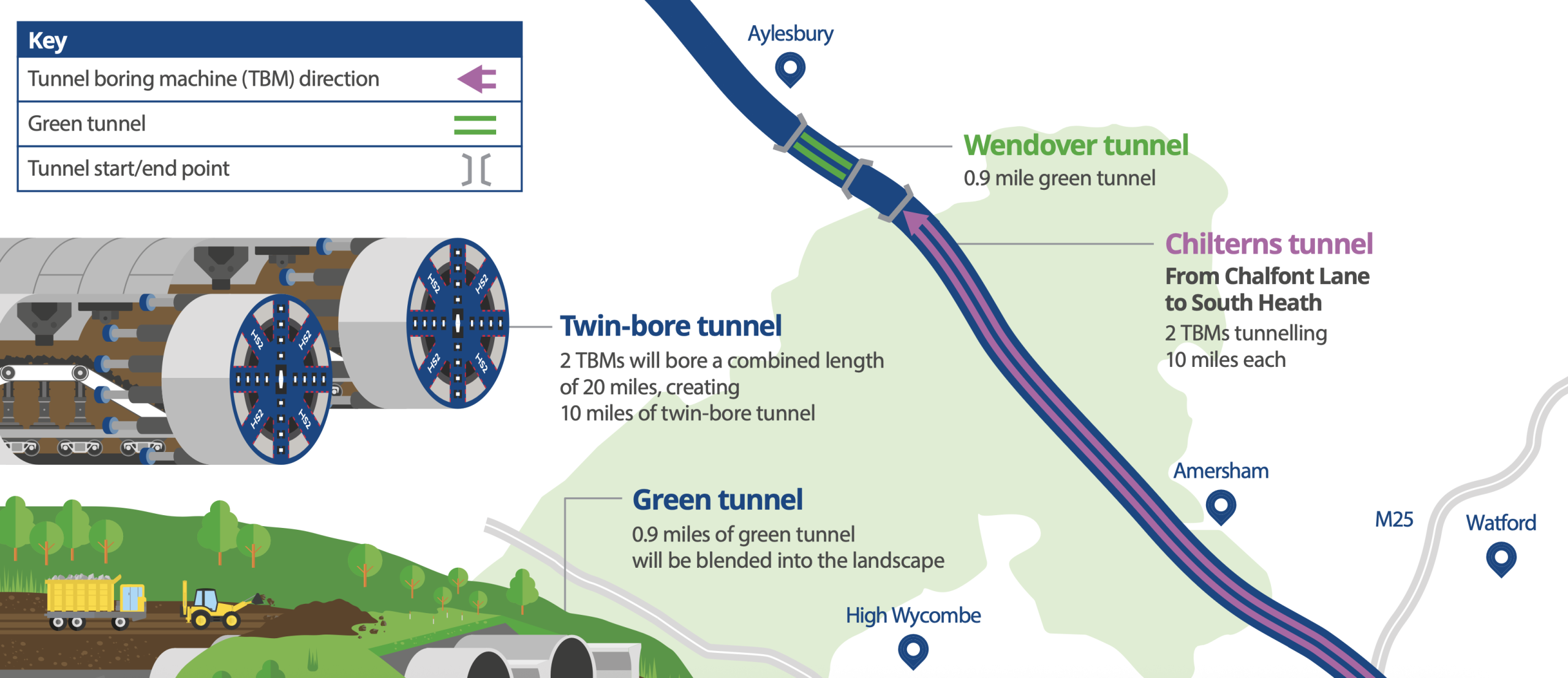
Chiltern Tunnels schematic diagram
Key Points:
- Twin-bore tunnels: 16 km long, the UK’s longest continuous rail tunnels.
- TBMs: Named Florence and Cecilia, each 2,000 tonnes, 10.3 m in diameter.
- Output: 3 million cubic metres of chalk excavated and reused in landscaping.
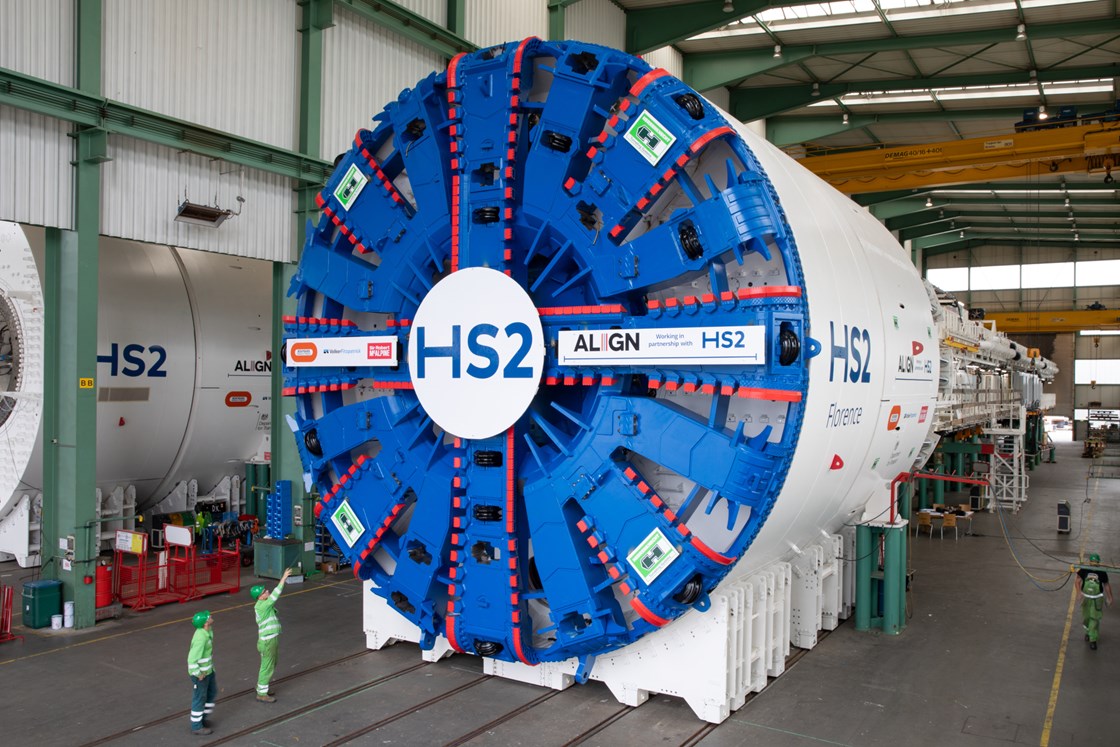
The Florence TBM used in the Chiltern Tunnels boring
3. Euston Station Redevelopment
The London Euston Station is being transformed into a 12-platform high-speed hub, connecting HS2 with national and local lines. In 2024, the UK government announced a public–private funding model to resume complete construction, integrating retail, residential, and green infrastructure.
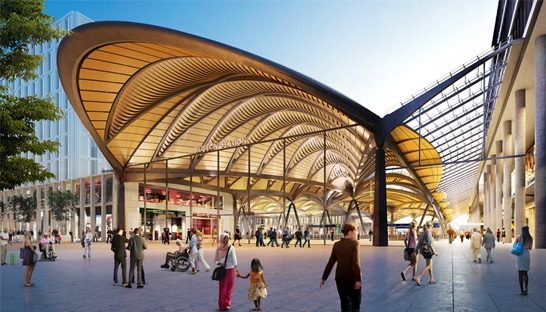
Euston Station HS2 Redevelopment
Key Points:
- Designed as a 12-platform high-speed terminus, integrating retail, housing, and green spaces. As of December 2024, the government announced a final design of 6 platforms.
- Initially paused in 2023, construction is now set to resume under a public–private partnership model, reducing public cost exposure.
Environmental Design and Sustainability Goals
Sustainability lies at the heart of HS2’s design philosophy. The HS2 Environmental Sustainability Strategy targets a net-zero carbon footprint by 2035, achieved through smart design and green technologies.
Key Measures Include:
- Reuse of 95% of excavated material in landscaping.
- Creation of 33 wildlife corridors and 7 million new trees.
- Deployment of hydrogen-powered construction vehicles.
- Installation of solar-assisted power systems at maintenance sites.

These innovations position the HS2 rail project as one of the most environmentally responsible infrastructure developments in Europe, aligning with the UK’s 2050 net-zero ambition.
Economic Benefits and Regional Impact
The High Speed 2 (HS2) UK project is designed to be more than a fast line; it is intended as an economic lever that reshapes labour markets, unlocks development sites, and increases business productivity through more rapid, more reliable connections.
The headline figure often quoted in official and parliamentary material is that the HS2 rail project could deliver net economic benefits in the tens of billions over its lifetime. According to the House of Commons 2024 report, HS2 could contribute £92 billion to the UK economy over 60 years, mainly through agglomeration effects in the Midlands and North. That number is sensitive to assumptions (discount rate, scope of the network, and regional uplift), but it is the key economic justification used in policy analyses.
Job Creation and Skills Development
- Direct and indirect employment: Construction and assembly alone have supported tens of thousands of roles: HS2 reporting and earlier government materials set peak programme employment around 30,000 to 34,000 on the main civil works, with many more supported across suppliers and professional services. These jobs cover white- and blue-collar roles, supporting a supply chain of precast manufacturers, tunnel subcontractors, signalling firms, and other civil engineering and construction professional services.
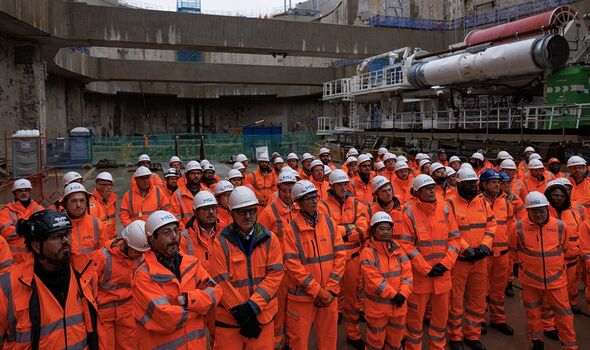
- Apprenticeships and skills legacy: The project has explicitly prioritised skills pipeline creation, including apprenticeships and links with the National College for High Speed Rail. HS2’s workforce programmes aim to leave a trained cohort of engineers, technicians, and digital specialists who will help the UK deliver future infrastructure projects. Reports indicate thousands of apprenticeship opportunities and hundreds of trained graduates already active across sites.
Agglomeration and Property Development
- Station-led regeneration: HS2’s own economic modelling and follow-on research (for example, Old Oak Common and Curzon Street studies) project concentrated investment near new hubs. Old Oak Common alone has been forecast to generate £10bn in new development value and tens of thousands of homes and jobs when fully realised. Early evidence shows development activity rising in the corridor. These results rely on complementary local planning and private sector delivery to convert transport capacity into economic space.
Network Capacity and Freight
- Released capacity on classic lines: One of HS2’s most practical economic benefits is capacity creation on conventional routes. By migrating long-distance intercity services to the high-speed spine, existing lines can support more stopping services, increased regional frequency, and additional freight paths. Government studies show the HS2 rail project can free up sufficient paths to add services on key corridors, a direct productivity gain for regional travel and logistics.
| Route | Current Travel Time | Future HS2 Time |
| London – Birmingham | 1h 21m | 49 minutes |
| Birmingham – Manchester | 1h 28m | 41 minutes |
| London – Manchester (if reinstated) | 2h 8m | 67 minutes |
For a full, detailed HS2 rail project map visit: https://www.hs2.org.uk/map/
Measurement Caveats
- The magnitudes of economic benefit: These economic benefits depend on the network realised, wider planning interventions, and the discounting of future benefits. Parliamentary briefings explicitly note that some benefits are hard to monetise (heritage, townscape), so the headline figures should be treated as best estimates rather than guaranteed outcomes.
Funding, Cost Management, and Policy Adjustments: Timeline and Accountability

Chiltern Tunnels: 16 km long, which is the longest tunnel in the HS2 rail project.
The High Speed 2 (HS2) UK project fiscal story is complex: early feasibility numbers were modest; successive scope changes, inflation, and technical challenges pushed estimates higher; political decisions then cut or deferred parts of the network. The simplest way to read the trajectory is that early estimates (circa 2010) were c. £20.5bn for a basic spine, the 2015/19 network projections rose above £50bn–£56bn, and later reviews and inflation pushed peak estimates far higher.
Recent investigative reporting and NAO commentary have suggested Phase 1 costs could be materially higher; ranges reported by media and some auditors in late 2024 put possible outturns up to or exceeding £70–80bn, depending on scope and inflation assumptions. The government’s October 2024 and parliamentary updates have sought to rebase the programme cost to a narrowed Phase 1 envelope while seeking private contributions for station developments.
The financial evolution of HS2 reflects both its vast scale and political sensitivity.
| Year | Estimate (£bn) | Notes |
| 2010 | 20.5 | Initial feasibility estimate |
| 2015 | 50.1 | Full network projection |
| 2019 | 56.6 | Inflation-adjusted scope |
| 2023 | 71.0 | Peak before scope reduction |
| 2024 | 44.6 | Final cost after phase cuts |
In response to cost pressures, the government introduced the Euston Reset Plan (2024), a financial framework combining public funds and private investment to ensure delivery without burdening taxpayers.
Key Fiscal Mechanisms and Governance Changes
- Euston Reset and private funding: The Euston station works have been a focal point for funding re-engineering. Government proposals and commercial models aim to reduce taxpayer exposure by attracting private capital to deliver parts of the station redevelopment, but independent auditors have warned this is difficult to achieve without state support and careful value-for-money tests. Recent press reporting places the Euston redevelopment cost in the multi-billion range (estimates around £7.5bn+ for Euston alone in some analyses).
- Audit and parliamentary oversight: The National Audit Office (NAO) and public accounts committees have increased scrutiny of HS2 rail project accounting and contingency practice, producing detailed recommendations on risk provisioning, contract management, and realistic delivery timetables. HS2 Ltd now reports to Parliament with six-monthly updates and annexes that provide visibility on spend and performance.
Practical Funding Implications
- Cost volatility: This has led to phasing and reprioritisation, delivering the London–Birmingham spine first, curtailing or delaying northern legs, and rechanneling capital into alternative regional projects. For policy-makers, the trade-off has been between achieving a whole national network and securing a deliverable core line that still unlocks immediate capacity and journey-time benefits.
Challenges Encountered: Detailed Anatomy and Mitigation
The High Speed 2 (HS2) UK project programme has confronted four interrelated challenge groups; below, I unpack each and show the practical mitigation responses.
1. Technical Constructability
- Challenge: Large TBM drives, long viaducts, and urban station excavations required advanced sequencing and ground risk controls.
- Mitigation: Use of multiple TBMs in the HS2 rail project, continuous geotechnical monitoring, slurry handling systems, and reuse of spoil to eliminate haulage and reduce carbon. The Chilterns TBM drives and Colne Viaduct prefabrication are exemplary workstreams that improved productivity while reducing environmental impact.
2. Environmental and Community Impact
- Challenge: Routeing through ancient woodland and sensitive habitats provoked public opposition and legal challenges.
- Mitigation: HS2 rail project adopted extensive biodiversity offsetting, green bridges, and replanting programs; they also revised alignments where possible and funded local mitigation projects. These measures raise costs but are essential to secure planning consents and social licence.
3. Cost and Supply-Chain Pressure
- Challenge: Global material price rises, labour shortages, and complex interfaces inflated costs.
- Mitigation: Procurement shifts toward longer-term framework agreements, greater use of modular precast elements to reduce on-site labour needs, and a push for local suppliers to build resilience in the supply chain. The Euston funding rework is a direct policy response to limit further public cost escalation.
4. Political and Programme Risk
- Challenge: Changes in government and policy priorities led to cancellations and reviews that disrupted delivery sequencing.
- Mitigation: Independent National Audit Office (NAO) reviews, stronger parliamentary reporting, and a renewed emphasis on delivering a stable Phase 1 as a priority of the HS2 infrastructure development have been implemented to regain confidence. Continuity of senior leadership at HS2 Ltd and clearer contract levers are being used to stabilise delivery.
5. Logistical Complexity
-
- Challenge: Building through densely populated cities and delicate ecosystems introduced major engineering risks.
- Mitigation: The 16 km Chiltern Tunnel, in the HS2 rail project, for example, required advanced monitoring systems and precise TBM operation to prevent ground settlement and protect groundwater sources, setting new standards for complex infrastructure tunnelling in Britain.
Each challenge demonstrates that engineering problems cannot be solved by technical fixes alone; they require coherent commercial models, stakeholder engagement, and realistic governance.
Lessons Learned and How HS2 Shapes the Future of British Rail
The High Speed 2 (HS2) UK project is redefining British transport engineering. Even in its scaled form, it sets the foundation for a future-ready high-speed rail network that can expand modularly across the nation. HS2’s practical legacy will be both the built railway and the institutional learning it leaves behind.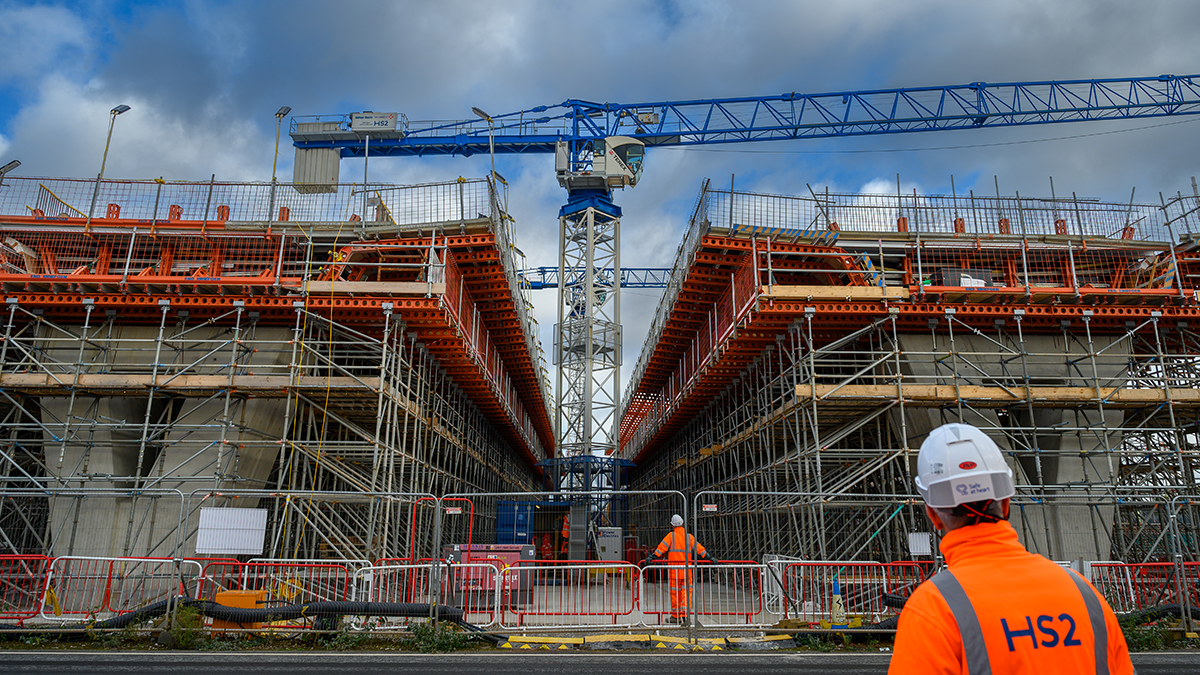
1. Operational and Technical Legacies
- Digital twins and asset management: HS2 is embedding digital twins for tunnels, viaducts, and track systems; these enable predictive maintenance, reduced life-cycle cost, and better safety. Early adoption of sensor networks and AI analytics sets a new standard for how UK rail assets are run.
- Materials and circularity: The project’s requirement to reuse excavated material and adopt low-carbon concrete has created templates for lower-embodied-carbon infrastructure elsewhere. These specifications will influence procurement across future major construction projects.
2. Policy and Procurement Lessons
- Robust early cost modelling and independent assurance: These are vital aspects towards the HS2 project completion. The NAO/Parliamentary reviews make a clear case for independent cost and schedule verification early in programme design to prevent scope creep.
- Delivery in modular, funded tranches: These modes that lock in early benefits reduce political risk. HS2 rail project now focuses on ensuring Phase 1 yields immediate capacity and journey-time benefits while alternative funding and delivery models for stations and extensions are explored.
3. Socio-Economic Opportunity
- If HS2 converts capacity into housing and commercial space around stations (Old Oak Common, Curzon Street), the rail investment becomes an instrument of urban renewal rather than a standalone transport project. That integration is the key to unlocking the larger £92bn economic potential referenced by analysts.
Conclusion: A New Chapter in Britain’s Transport Revolution
The High Speed 2 (HS2) UK project is far more than a railway; it is a symbol of engineering ambition, environmental foresight, and national resilience. Despite delays, policy shifts, and financial scrutiny, the HS2 rail project continues to represent the future of sustainable transport infrastructure in the UK.
It proves that when engineering meets innovation and political will aligns with purpose, the result is transformative. HS2’s legacy will not only be measured in miles of track, but in the renewed potential it brings to the cities, communities, and industries of modern Britain.

Building Tomorrow’s Infrastructure
At ConstructionFrontier.com, we spotlight the world’s most transformative engineering feats, from high-speed rail networks such as the UK high-speed rail and mega tunnels to sustainable bridges and smart cities. Follow us to stay informed about the technologies driving tomorrow’s infrastructure revolution.





